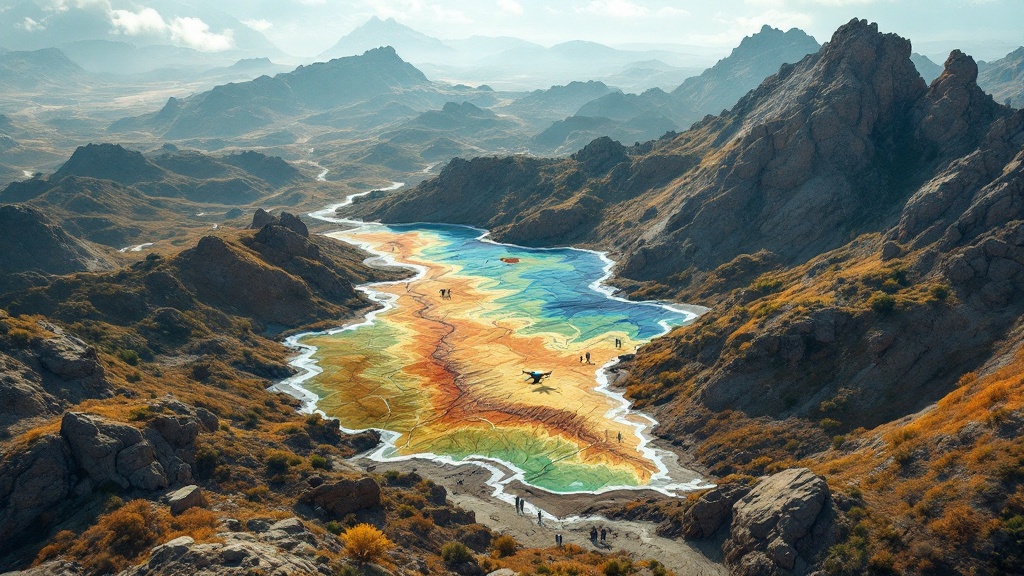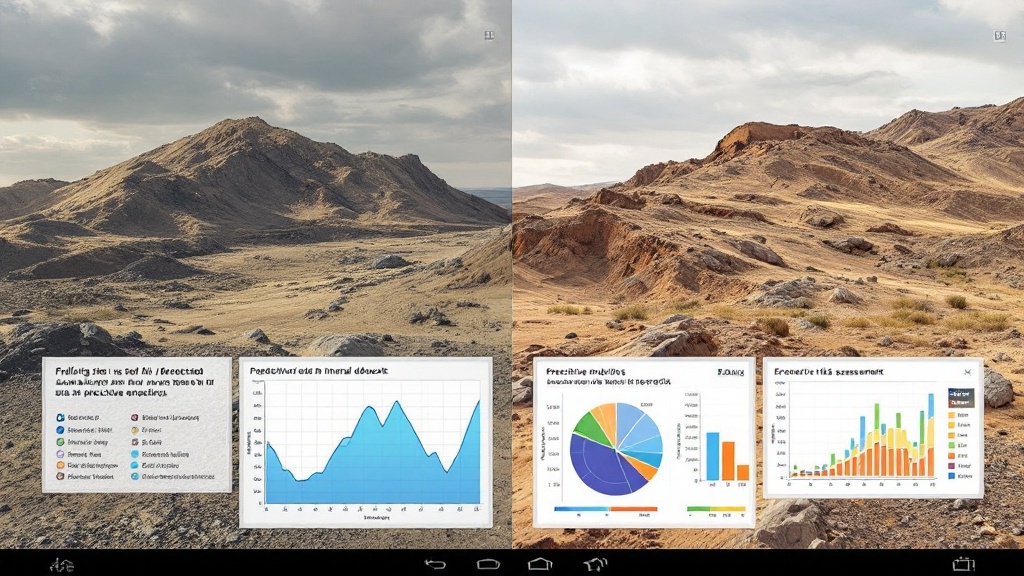Introduction
Mineral exploration has long been a process marked by uncertainty, high costs, and environmental risks. Traditionally, it has relied heavily on geological surveys, manual sampling, and expert interpretation—methods that are time-consuming and often imprecise. But in 2025, Artificial Intelligence (AI) is fundamentally transforming how we discover and assess mineral resources. With its ability to analyze vast datasets, detect hidden patterns, and make accurate predictions, AI is opening a new era of efficient, sustainable, and data-driven exploration. It is no longer a complementary tool but a core driver of progress across the entire exploration pipeline, from prospecting to feasibility studies.

Data-Driven Geology: Mapping Resources with Precision
AI thrives on data—and in mineral exploration, that means integrating information from satellite imagery, geophysical surveys, chemical analyses, seismic data, and drilling reports. Machine learning algorithms can process this diverse and voluminous data to identify mineral-rich zones that might otherwise be missed by human analysis alone. These tools enable geologists to create highly detailed 2D and 3D subsurface maps, estimate ore quality and distribution, and predict the most promising areas for drilling with high confidence.
Advanced AI models can now analyze mineralogical compositions and geological structures directly from high-resolution remote sensing and drone-based imagery, facilitating early-stage exploration without the need for invasive fieldwork. This dramatically reduces exploration costs, shortens lead times, and minimizes the ecological footprint of prospecting activities. Additionally, AI systems can update models in real time as new data becomes available, allowing dynamic adjustments to exploration plans.
The AI revolution in mineral exploration benefits from advancements in large language models, as explained in How Does Large Language Models Work, which power complex data analysis.

Accelerating Discovery Timelines
One of AI’s most powerful contributions is its ability to compress the time needed to discover viable mineral deposits. Tasks that once took months—or even years—can now be completed in a matter of days or weeks. Deep learning models trained on global repositories of mineral deposit data can rapidly screen new geographical regions for geological features that match known mineralization patterns.
AI also automates the tedious and error-prone process of data cleaning, normalization, and integration. This allows exploration teams to focus more time on high-value strategic decision-making rather than data management. Real-time analytics powered by AI mean companies can quickly pivot in response to new findings, optimize drilling plans on the fly, and respond faster to market demands. The combination of speed and precision enables companies to bring viable sites to development and production significantly sooner than traditional workflows would allow.
AI’s ability to analyze vast geological datasets is enhanced by techniques covered in The Science of AI-Powered Text Generation, enabling faster identification of mineral deposits.

Reducing Exploration Risks and Costs
Mineral exploration is inherently risky, both from a financial and environmental perspective. Drilling in the wrong location can result in millions of dollars in lost investments and unnecessary environmental disruption. AI reduces these risks by significantly improving the accuracy of target predictions. Predictive models can assess not only where minerals are likely to be found but also calculate probabilities related to economic viability, geological complexity, and operational feasibility.
Moreover, AI can simulate various exploration and development scenarios, providing decision-makers with a comprehensive understanding of cost-benefit trade-offs before initiating any physical work. These simulations take into account geological variability, market volatility, logistics, and potential social and regulatory impacts. The ability to test different strategies digitally enables smarter investment decisions, reduces waste, and minimizes the likelihood of expensive missteps.
The integration of AI in exploration parallels trends in personalized AI development discussed in The Rise of Personalized AI How Custom GPTs Are Shaping Industries.

Sustainable Exploration and Environmental Monitoring
Sustainability has become a central pillar of modern mining practices, and AI is increasingly seen as an enabler of environmentally responsible exploration. Remote sensing technologies, when combined with AI, can monitor ecosystems in real time and detect early signs of environmental degradation or disruption. These systems can automatically track changes in vegetation, water sources, and landforms, providing vital information to guide responsible exploration.
Additionally, AI algorithms can recommend the least invasive routes for access roads, equipment placement, and drill sites based on terrain sensitivity and biodiversity data. This precision planning helps companies reduce habitat destruction and minimize their carbon footprint. AI also assists in meeting Environmental, Social, and Governance (ESG) requirements by generating compliance reports, monitoring emissions, and forecasting future environmental impacts. As global scrutiny over ecological standards intensifies, AI provides the mining industry with essential tools to align exploration with ethical and legal expectations.
Advanced AI tools that improve decision-making processes can be related to innovations featured in How AI-Powered Tools Can Help You Scale Your Business Faster.

Empowering Smaller Players and Developing Nations
AI’s increasing accessibility is democratizing mineral exploration, leveling a field that was historically dominated by multinational corporations with vast resources. Open-source AI tools, cloud-based computing platforms, and pre-trained geological models are now readily available to smaller mining firms, academic institutions, and even national governments with limited exploration budgets. These tools reduce the need for large, specialized in-house teams, lowering the barriers to entry and making it possible for a broader range of stakeholders to engage in exploration activities.
In particular, developing nations rich in untapped mineral resources can benefit immensely. AI-powered exploration provides a strategic advantage in attracting foreign investment, initiating local mineral development, and generating new employment opportunities. By equipping these nations with cutting-edge digital tools, AI fosters equitable access to natural wealth and contributes to regional economic growth.
The evolving context-awareness of AI systems, important in interpreting complex geological data, is highlighted in AI is Becoming More Context-Aware and Emotionally Intelligent.

Conclusion
AI is revolutionizing mineral exploration by transforming it into a faster, smarter, and more sustainable process. From mapping hidden deposits with unprecedented accuracy to reducing environmental impacts and empowering smaller players, the technology is reshaping how the mining industry operates at every level. As AI continues to evolve, its integration into exploration workflows will become even deeper and more seamless, helping meet the growing global demand for critical minerals required for clean energy, technology, and infrastructure. Ultimately, the future of mineral discovery isn’t buried underground—it’s being unlocked by algorithms, data, and a vision of responsible innovation that benefits people and the planet alike. Explore GEE-P-TEE now.

Leave a Reply